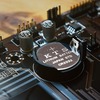1. What is a Cartridge Element? What role does it play in a countertop reverse osmosis water purifier?A
cartridge element is the core component of a countertop reverse osmosis water purifier, responsible for filtering impurities and purifying water. It is typically made from a combination of specific filter materials (such as activated carbon, reverse osmosis membrane, and polypropylene fiber), with different materials corresponding to different filtering functions. During operation, tap water first flows through the filter element, where large particles of impurities such as silt and rust are initially intercepted. Harmful substances such as chlorine, odors, and heavy metal ions (such as lead and mercury) are then further adsorbed or blocked, ultimately ensuring that the water flowing out meets drinkable standards. Simply put, it acts like the "filter" of a water purifier, directly determining the effectiveness of water purification.
2. What are the common types of cartridge elements? What are the different filtration focuses of each type? Currently, there are three main types of cartridge elements commonly used in countertop reverse osmosis water purifiers, each with distinct filtration focuses. The first type is the pre-filter, often made of polypropylene fiber. It primarily filters large impurities in the water (such as silt, rust, and insect eggs), preventing clogging of subsequent fine filter elements and extending the life of the overall purification system. The second type is the activated carbon filter, which comes in two types: granular activated carbon and compressed activated carbon. Its core function is to absorb chlorine, residual chlorine derivatives (such as chloroform), and odorants (such as fishy and earthy odors) in the water, improving the taste of the water. The third type is the reverse osmosis membrane filter, which is a more precise type. Its membrane pore size is only approximately 0.0001 micron, effectively blocking tiny contaminants such as heavy metal ions, bacteria, viruses, and antibiotics, making it a key component for achieving "deep purification."
3. How do I know if a cartridge element needs to be replaced? What are the consequences of not replacing it in time? There are three ways to determine if a cartridge element needs replacement: First, observe the water output from the purifier. If the output is significantly reduced (after eliminating water pressure issues), the filter element may be clogged with impurities, reducing filtration efficiency. Second, smell or taste the water. If you detect a distinct chlorine or unpleasant odor, the activated
carbon element's adsorption capacity is saturated. Third, consider usage time. Generally, it's recommended to replace the pre-filter element every 3-6 months, the activated carbon filter element every 6-12 months, and the reverse osmosis membrane element every 12-24 months (the specific replacement time depends on the local water hardness and water usage).
Failure to replace the cartridge element promptly will have two consequences: First, a clogged filter element will reduce the purifier's efficiency, resulting in a decrease in water output, or even incomplete water output. Second, a saturated filter element may lose its filtering capacity, allowing adsorbed contaminants to re-enter the water, rendering the purified water unsanitary and defeating the purpose of the purifier.
4. What are the operational details to pay attention to when replacing a Cartridge Element?Replacing a Cartridge Element does not require any complex tools, but there are three important things to note: First, before replacing the filter, turn off the water inlet valve (if available) and open the water outlet valve to release any residual water pressure and prevent water from overflowing when removing the filter element. Second, when removing the old filter element, gently rotate it (some models are snap-on and can be removed by simply pressing). Avoid using excessive force, which may damage the filter housing or the water purifier interface. Finally, when installing the new filter element, ensure that the filter element is oriented correctly (some filter elements have clear "inlet" and "outlet" markings) and rotate it until it fits snugly into the interface to prevent leaks. After installation, turn on the water inlet valve and observe for 1-2 minutes to confirm there are no leaks before using it normally.
5. How can I maintain the Cartridge Element in daily use to extend its lifespan?Daily maintenance of the Cartridge Element can be performed in three ways: First, avoid leaving the water purifier unused for extended periods. If no one is using it at home for more than a week, it is recommended that you run the water purifier for 1-2 minutes before turning off the water inlet. The next time you use the water, run it for 30 seconds to flush out any stagnant water remaining in the filter. Second, regularly clean the filter housing. Wipe the outside of the filter with a clean, damp cloth to prevent dust and stains from accumulating and affecting the overall heat dissipation or the seal of the connectors. Third, pay attention to the incoming water quality. If your local tap water is high in hardness (for example, noticeable scale buildup after boiling water), you can install a simple pre-filter (not brand-specific, only compatible with universal connectors) at the water purifier's inlet to reduce wear on the core filter from large particles, thereby indirectly extending the life of the Cartridge Element.



